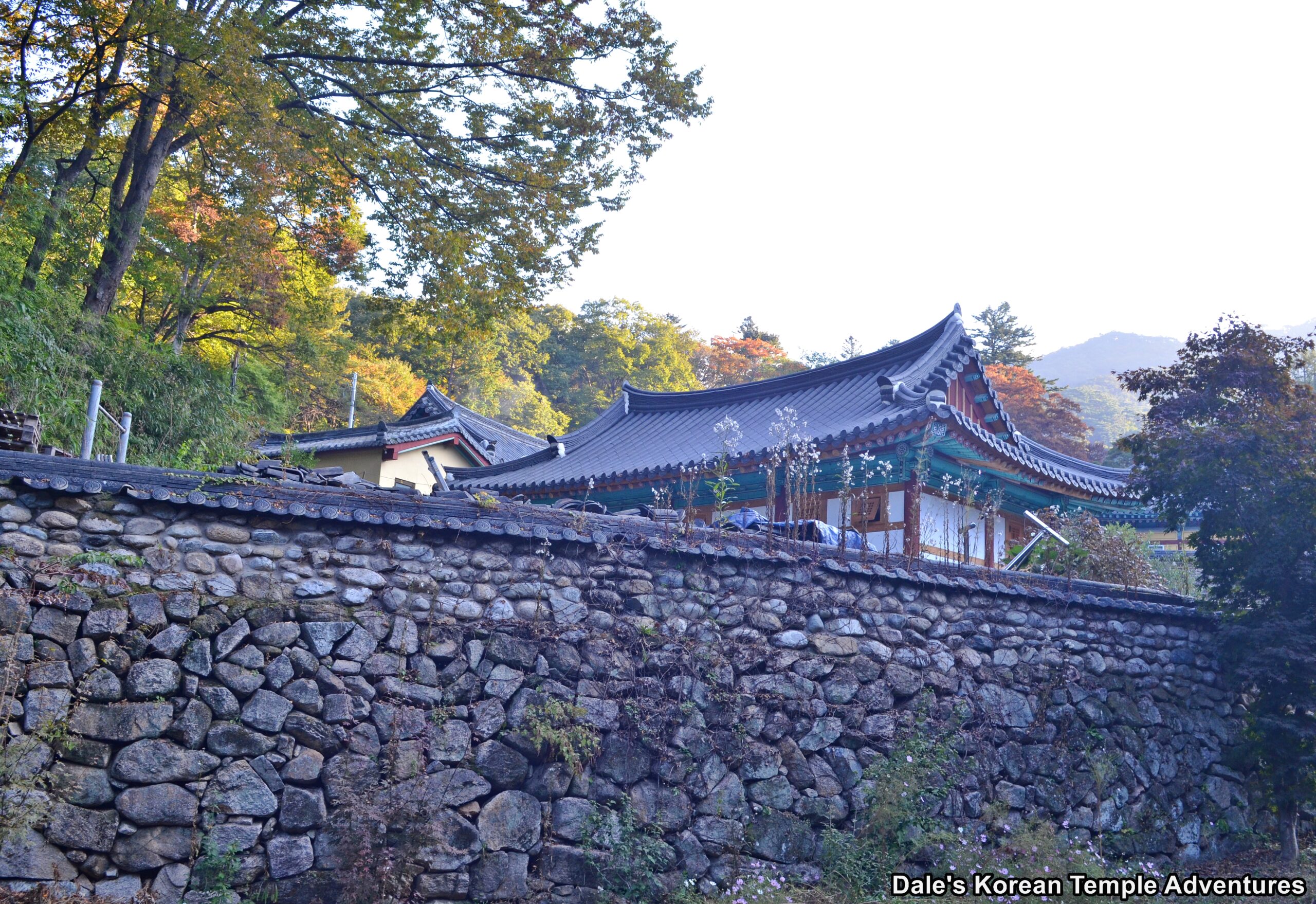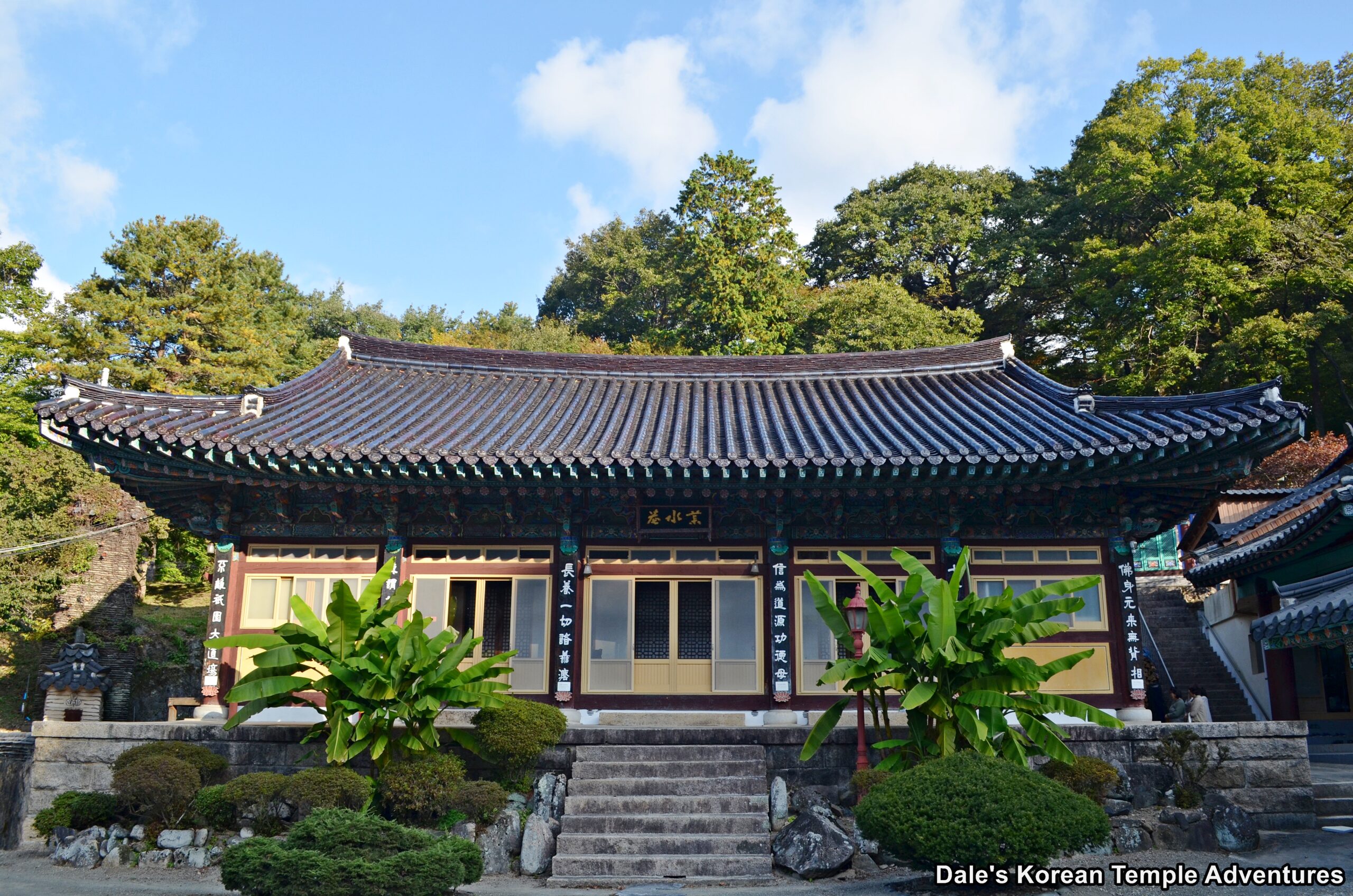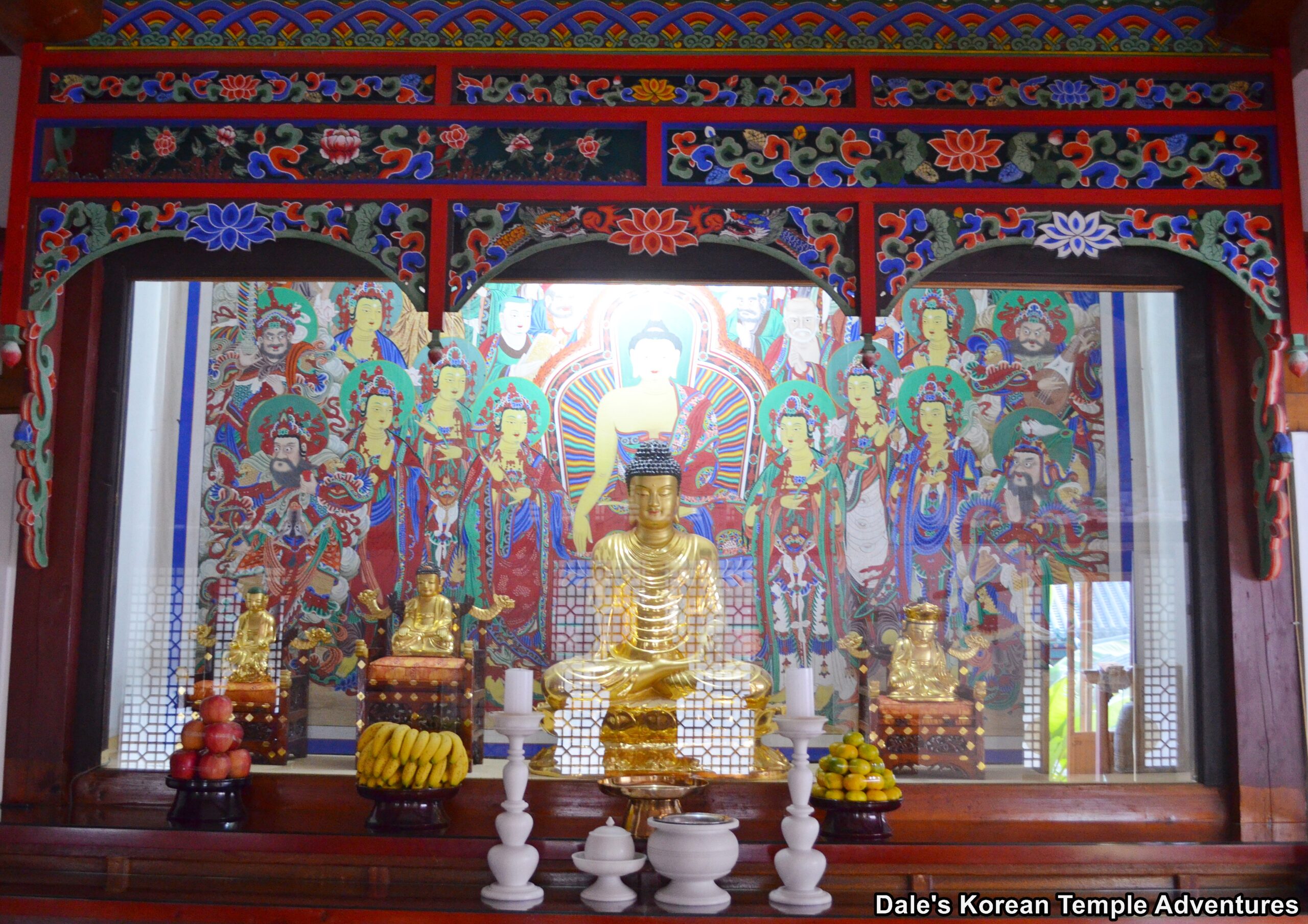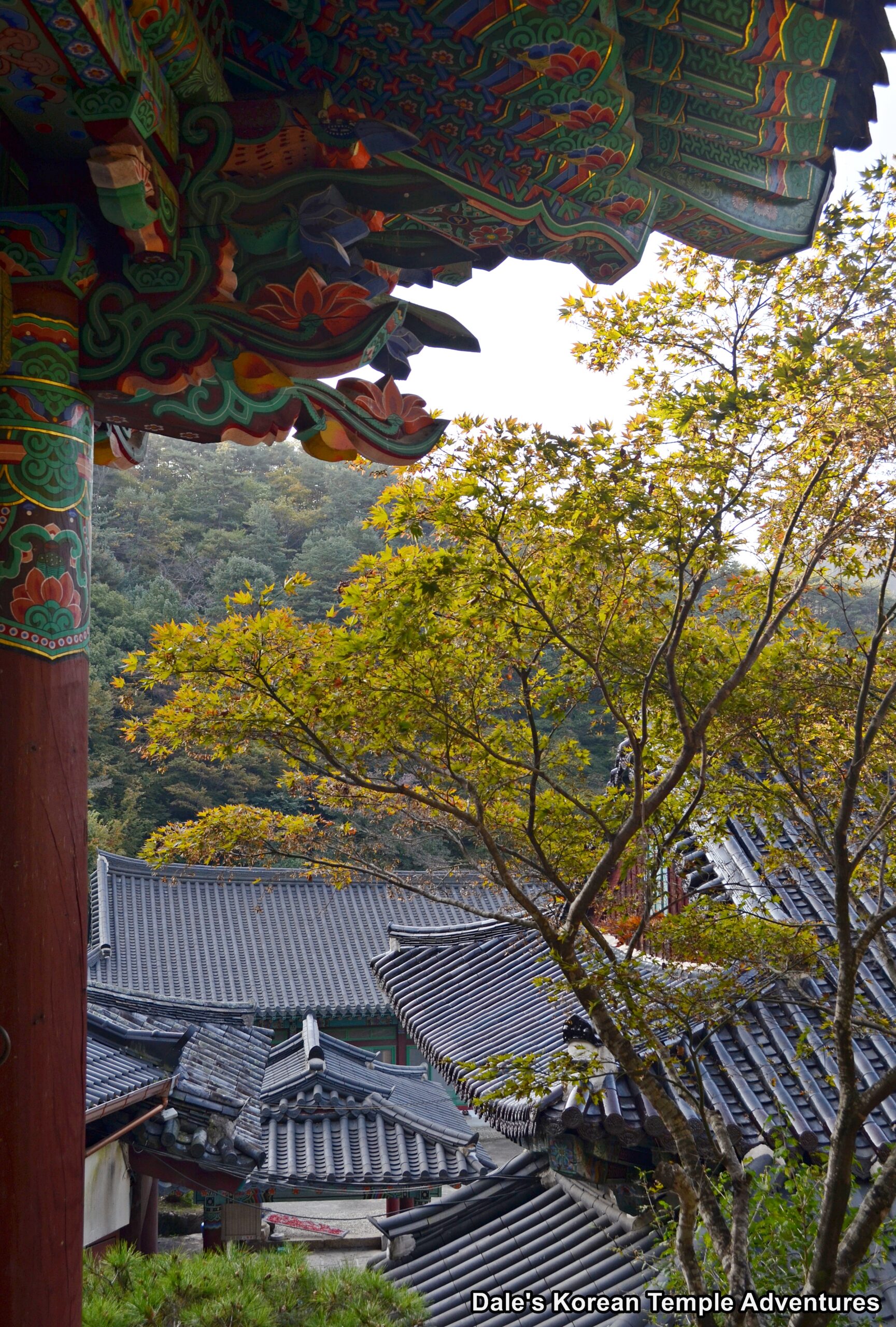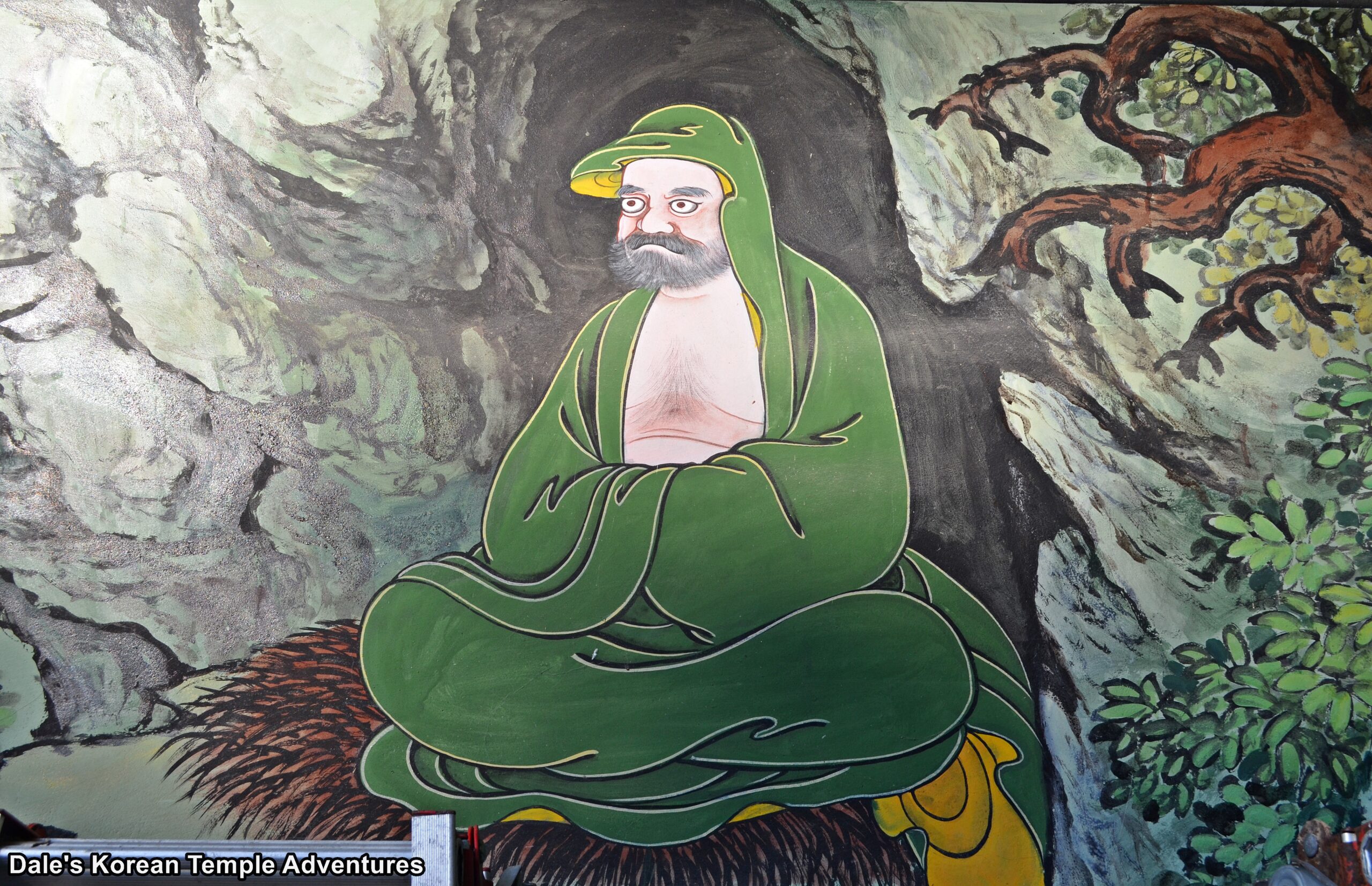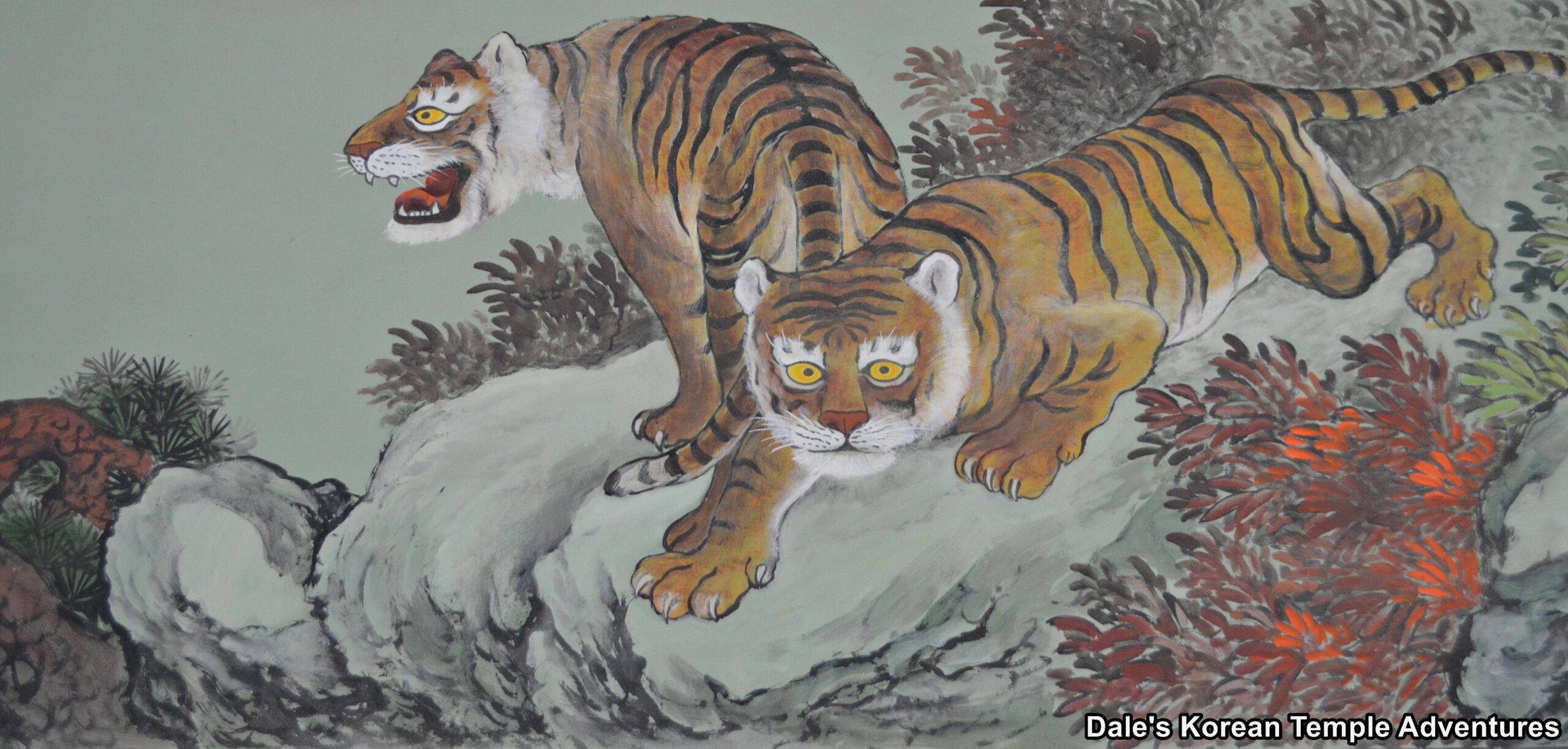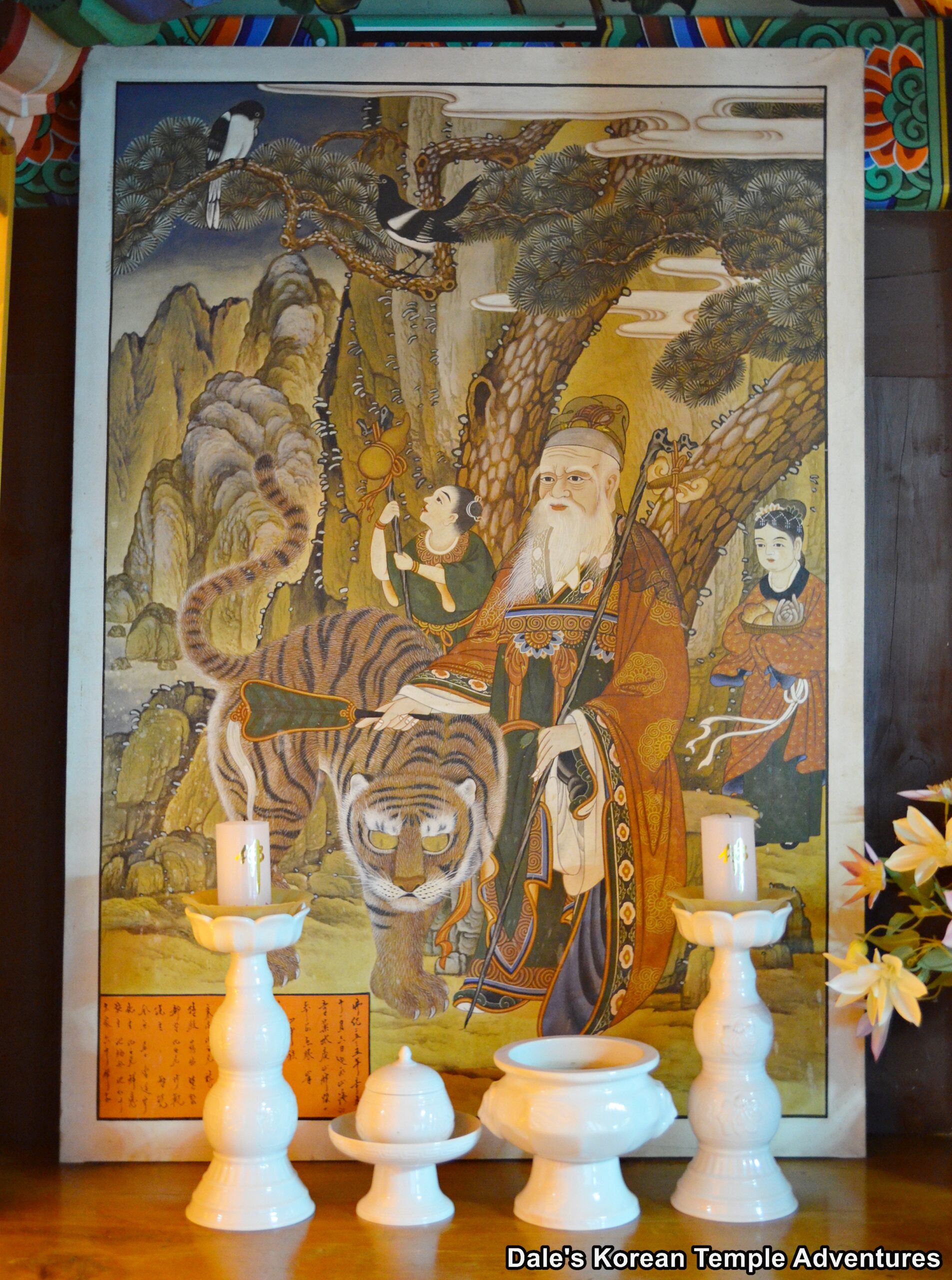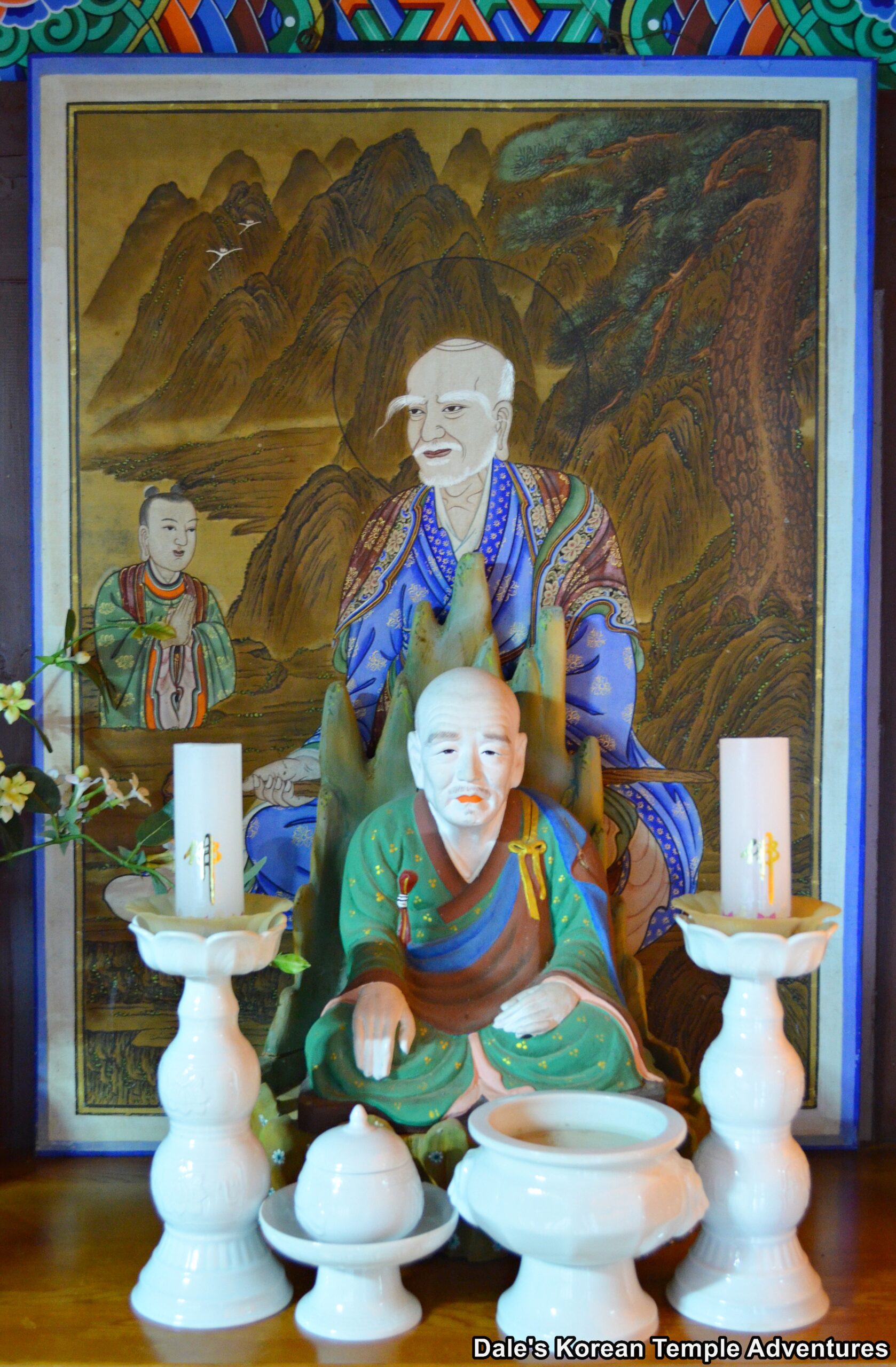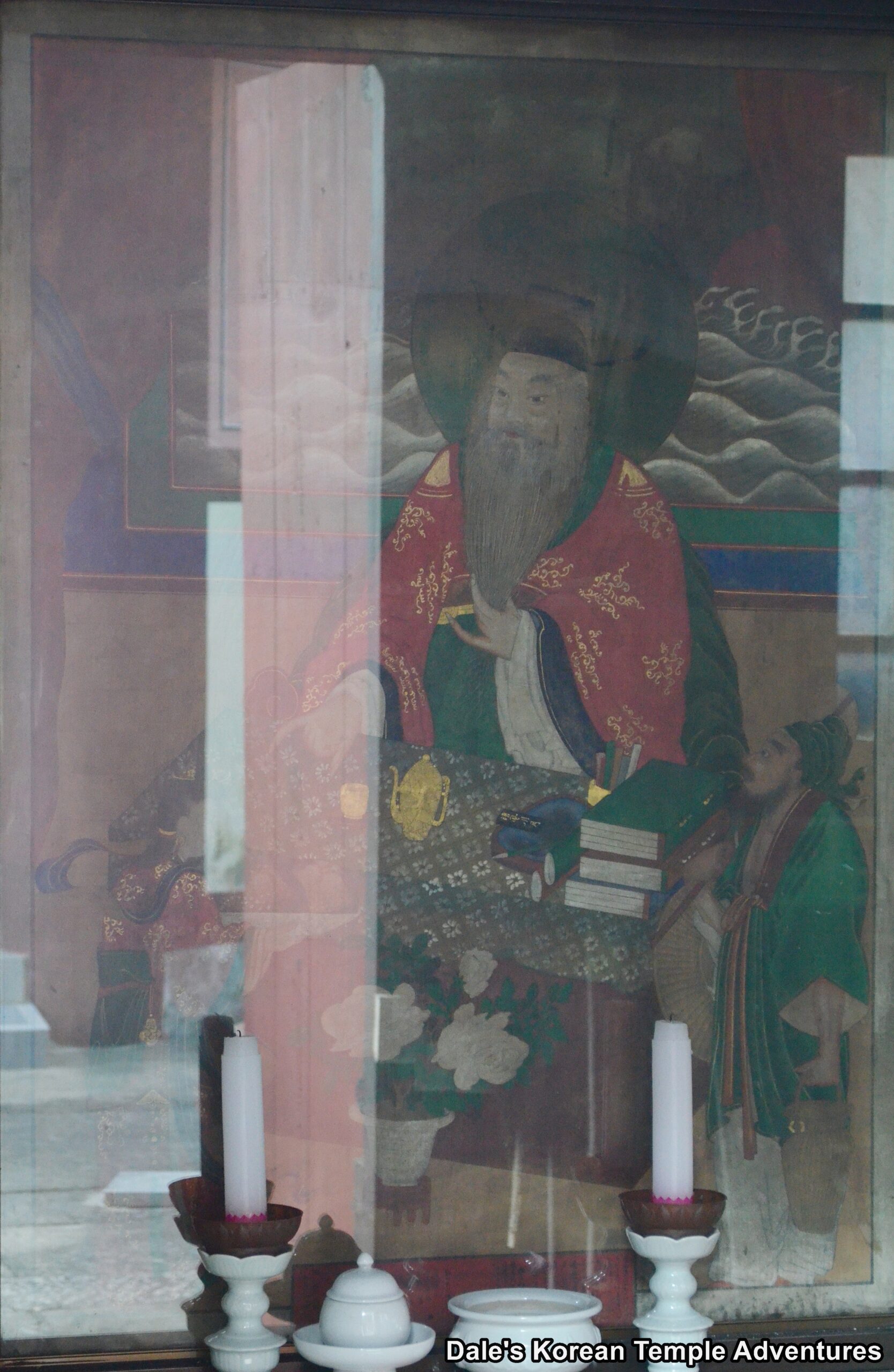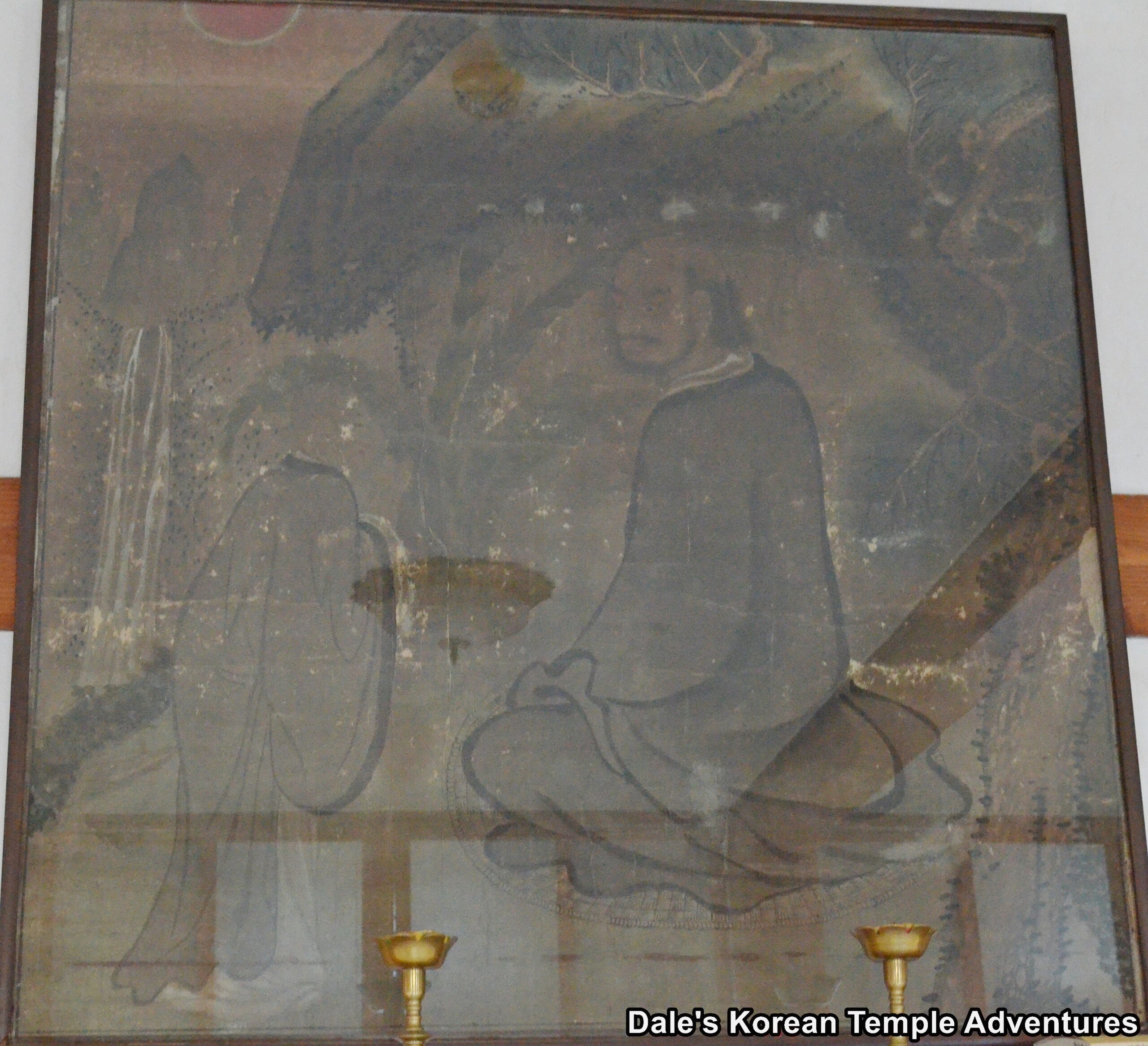Yaksuam Hermitage – 약수암 (Hapcheon, Gyeongsangnam-do)
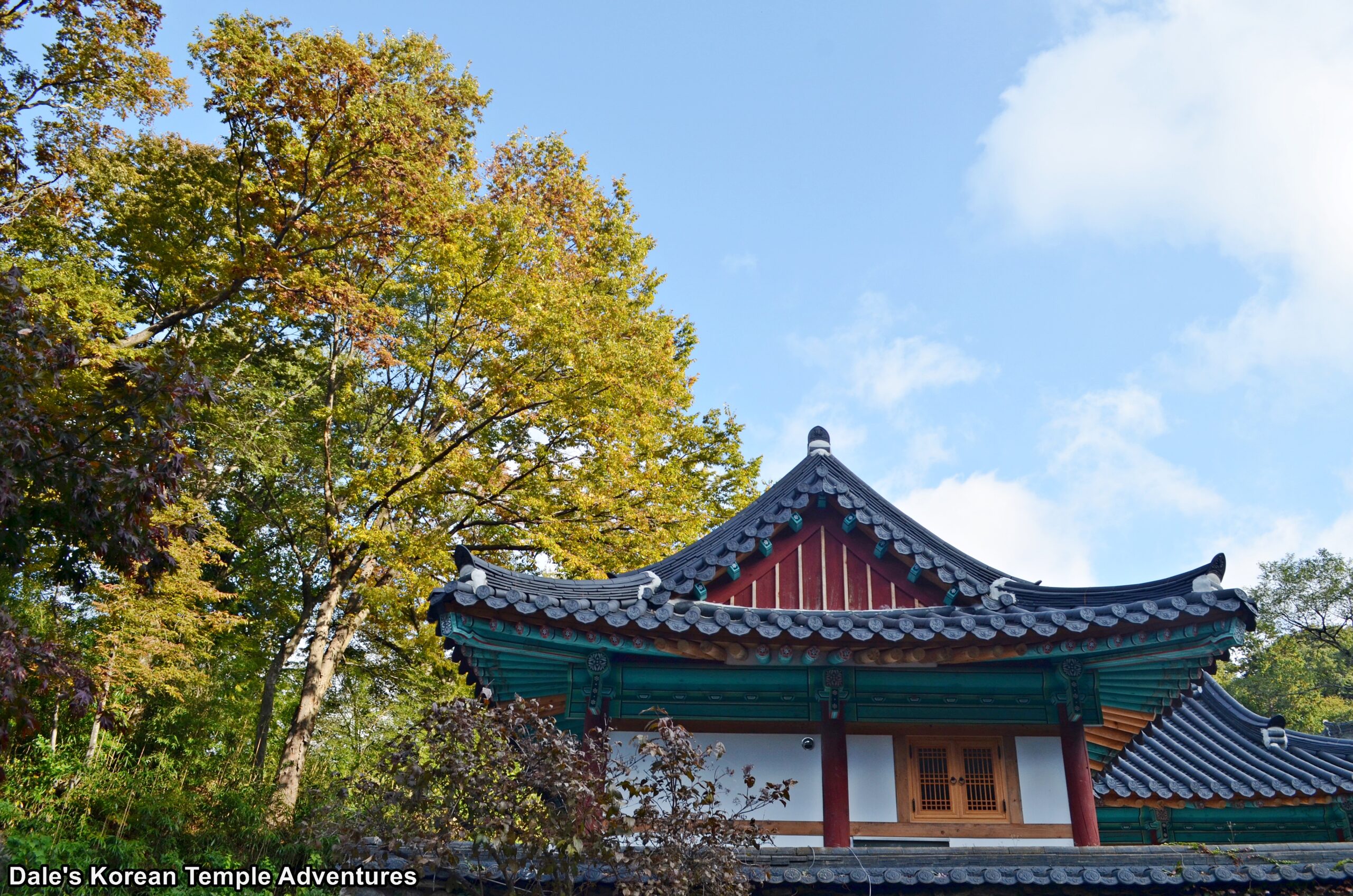
Hermitage History
Yaksuam Hermitage is located on the Haeinsa Temple grounds in the foothills of Mt. Gayasan (1,433 m) in Hapcheon, Gyeongsangnam-do. Yaksuam Hermitage was first founded in 1904 by the monk Seongju. Yaksuam Hermitage was later rebuilt in 1927. Currently, the hermitage is a home to nuns (비구니).
Hermitage Layout
You’ll make your way past large, mature trees, a high stone wall, and an auxiliary building, before coming to the entry gate at Yaksuam Hermitage. Stepping inside the main hermitage courtyard, you’ll find what almost looks to be the nuns’ dorms straight ahead of you; but instead, this is the Daeung-jeon Hall at Yaksuam Hermitage. There are other entrances to this multi-purpose building. These entrances are for the meditation hall and administrative offices at the hermitage. The central entrance is for the main hall. Housed inside this shrine hall is a slender statue of Seokgamoni-bul (The Historical Buddha) inside a glass enclosure with three tinier seated statues. Also housed inside the main hall are two older murals. One is dedicated to Jijang-bosal (The Bodhisattva of the Afterlife), while the other mural is an older Shinjung Taenghwa (Guardian Mural).
To the left of the Daeung-jeon Hall are some nuns’ dorms, while to the right is the hermitage’s meditation centre. And next to the meditation centre, you’ll find the hermitage’s kitchen. It’s between the Daeung-jeon Hall and the hermitage kitchen that you’ll find a stone set of stairs. It’s up these that you’ll find the Samseong-gak Hall at Yaksuam Hermitage. The exterior walls to the shaman shrine hall are adorned with murals of the Bodhidharma, a collection of rabbits, and a pair of tigers. Stepping inside the Samseong-gak Hall, you’ll find a statue and painting inside a glass enclosure on the main altar dedicated to Chilseong (The Seven Stars). To the left and right of these central images, you’ll find two modern paintings dedicated to Dokseong (The Lonely Saint) and Sanshin (The Mountain Spirit).
A couple of other highlights you can look for at Yaksuam Hermitage, and if they’re open to you, is a beautiful painting dedicated to Jowang-shin (The Fireplace King Spirit) inside the fireplace area underneath the Daeung-jeon Hall. Another interesting highlight, and if you’re invited in by the very welcoming abbess at Yaksuam Hermitage, is the painting inside the meditation centre to the right of the Daeung-jeon Hall. While blackened by age, they have a beautiful painting dedicated to the Bodhidharma and Dazu Huike (487-593 A.D.). The painting illustrates the famed “Cutting Off His Arm,” where Dazu Huike cuts off his left arm to prove his resolve to the Bodhidharma. Rather interestingly, and similar to the story about the beheading of Ichadon (501-527 A.D.); whereas white blood pours forth from Ichadon’s neck, white blood pours forth from Dazu Huike’s left arm in this painting. I asked the abbess just how old the painting was. She couldn’t be anymore specific than a couple hundred years old. Also, I asked her where it was originally located, and this was unknown, as well. Either way, the darkened painting is beautiful, and it’s an inspiritational example on the main altar for the nuns’ at Yaksuam Hermitage to pray to during a meditation session.
How To Get There
To get to Yaksuam Hermitage, you’ll first need to get to Haeinsa Temple. From the Hapcheon Intercity Bus Terminal, you’ll need to board a bus bound for Haeinsa Temple. The bus ride is about 5,000 won. From where the bus lets you off at Haeinsa Temple, you’ll need to find the trail that leads up to Haeinsa Temple. The walk is about one kilometre, and the trail starts to the left of the Haeinsa Temple museum. Arriving at Haeinsa Temple, and standing next to the Iljumun Gate, you’ll need to head south of this entry gate for about 500 metres. From there, there’s a road that you’ll need to follow for an additional 200 metres. In total, and from the Iljumun Gate, the walk should take about 10 minutes, or 700 metres.
Overall Rating: 3/10
There’s not too much to see at Yaksuam Hermitage, but they’re very welcoming at this hermitage. The main altar inside the Daeung-jeon Hall is simple and nice. The other main higlights to this hermitage are the painting dedicated to Jowang-shin near the fireplace underneath the main hall, as well as the historic painting dedicated to both the Bodhidharma and Dazu Huike inside the meditation centre.
